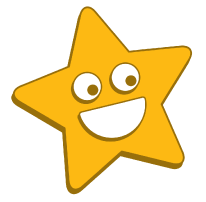

Discover how consonants can boost your reading, writing, and speech skills.

Author
Carla Greenwood
Published
December 12, 2023


Discover how consonants can boost your reading, writing, and speech skills.

Author
Carla Greenwood
Published
Dec 12, 2023


Discover how consonants can boost your reading, writing, and speech skills.

Author
Carla Greenwood
Published
Dec 12, 2023


Key takeaways
Phonics are a big part of early learning, whether at home or school. Children are taught to look at a letter, make the appropriate sound, and recognize the letter when it’s written down.
Then, children move on to reading and writing when they learn how to combine vowels and consonants to form words.
So, what makes a consonant different from a vowel?
A consonant is defined by the way the sound obstructs the flow of air through the vocal tract during speech.
For example:
T is pronounced by pushing the tongue against the roof of the mouth and then releasing it.
F is pronounced by forcing air through your teeth.
M is pronounced by using your nasal passage (when you say the letter you should feel a slight vibration in your nose).
All of these sounds obstruct airflow in one way or another. In contrast, the vowel ‘o’ is spoken more fluently without any disruption of air.
Unlock unlimited English questions
Put your learning into practice with fun exercises + games that are proven to boost ability!
Some consonants disrupt a lot of airflow when they’re spoken, others just obstruct a small amount. So, depending on their different properties, consonants are split into different categories.
Plosive consonants completely block the flow of air when spoken, generally followed by the release of air. This is called an occlusive or consonant stop.
The sound can be made with the tongue, lips, or glottis — the space between the vocal folds. The English language has six plosive consonants; p, b, t, k, d, and g.
Let’s look at some examples:
Play
Tiny
Sweep
Find
Letter
A fricative is a type of sound that’s made by the friction of breath when air is pushed through a narrow opening. Two articulators, such as the lips, teeth, tongue, or palate create this opening.
Fricative consonants create more of a hissing or buzzing sound. Some common fricatives include f, s, z, and th.
For example:
Zoo
Think
Never
Safe
Buzz
Affricate consonants start with a plosive and end with a fricative. Affricate consonants are generally either -ch or ‘j’ sounds.
For example:
Chicken
Watch
Edge
Badge
A common mistake is to assume that you always need to have a ‘d’ alongside a ‘g’ to make an affricate. For example, fudge or nudge.
However, remember that it’s the sound that makes it an affricate. For example, “pigeon” has no letter ‘d’ but it’s still pronounced like ‘pidgin’. So, it’s classed as an affricate.
Nasals, also called nasal occlusives or nasal stops, are consonants that block air from the mouth when spoken. This action causes the sound to come entirely from the nose. The nasal sounds in the English language are m, n, and ng.
For example:
Mother
Summer
Golden
Nine
Belong
Approximants are speech sounds that are created by bringing two articulates (such as the tongue or lips) close to each other but not close enough to touch.
Try pronouncing the phonetic sound for ‘w’, as in “war”. You have to round your lips and the back of your tongue raises close to the roof of your mouth, making it an approximant consonant.
Other common approximant consonants in the English language are r, y, and l.
However, don’t forget that sounds like ‘qu’ are also approximants because of the tongue and lip positions when speaking them. These are known as consonant digraphs, which simply means that two letters are combined to make one phonic sound.
👉 In some other languages, the letter ‘r’ is not an approximant because it becomes a rolling r. This involves vibrating the tongue against the roof of the mouth.
Below are some more examples of approximant sounds in words:
One
Away
Right
Yes
Flip or tap consonants (also known as alveolar flapping) are characterized by a single contraction of the muscles, causing one articulator (i.e., tongue) to flick onto another.
The main difference between a flip/tap and a plosive consonant is that there’s no buildup of air pressure behind the place of articulation. Put simply, a plosive stop forces air out, a flip or tap is more comparable to a brief or gentle stop.
Some experts have proposed for there to be a clear distinction between a flip and a tap. However, most linguists use the terms interchangeably.
‘T’ and ‘d’ sounds are good examples of flip and tap consonants. However, pronunciation is important to be able to distinguish between a plosive and a flip or tap.
For instance, in the word “better”, you can really pronounce both ‘t’ sounds to make it a plosive. But, in common speech, this word is usually spoken much softer, dropping the prominent ‘t’ sound. When you say ‘better’ phonetically, your tongue tip approaches the alveolar ridge (roof of the mouth) and stays there for a short moment to make the ‘t’ sound. However, when the word is turned into a flip or tap, the tongue tip merely grazes the ridge.
Medal
Water
City
Better
A trill is a sound made by vibrating one articulator against another (think about the rolling r sound). It usually consists of the tongue, lips, or uvula (the hanging ball at the back of your throat) vibrating against another part of the mouth.
Trills are more common in other languages such as Spanish and Afrikaans. However, it’s a skill that can be learned with practice.
Consonants and vowels are normally classified in three ways using the voice-place-manner system:
The manner of articulation refers to the degree of closure of the articulators and the restriction of airflow needed to make the sound.
For example:
When you say “pig”, the ‘p’ is a plosive sound that completely blocks the release of air because the lips come together.
In contrast, fricative consonants like ‘f’ as in “fly”, only require a partial closure of the articulators.
You can also get consonant clusters, also called a consonant blend. This simply means that two consonants appear in a word without a vowel between them. Unlike digraphs, which use multiple consonants to make one sound, each consonant makes its own sound in a consonant cluster.
For example:
Clap
Soft
Flow
Place of articulation means the physical location in the vocal tract where the sound is made. It also refers to the articulatory movements needed to make the sound.
The following terms describe the placement of certain consonants:

Voicing refers to the vocal cord vibrations made in certain sounds. If you feel a vibration in your throat when you say a word, it’s classed as voiced. If you don’t feel a vibration, it’s classed as unvoiced.
Placing two fingers on your throat as you speak will make it easier to identify whether a word is voiced or unvoiced.
For example:
Try saying the words “bet” and “pet”. When you say “bet”, you should feel a slight vibration in your throat and vocal cords. However, when you say “pet”, there is no vibration.
At the beginning of this article, we defined consonants as speech sounds that obstruct airflow. These should not be confused with consonance, which is the repetition of the same (or similar) consonant sound, i.e., pitter-patter.
Consonance is often used in poetry to make the arrangement of words more appealing to readers.
You may have also come across a term called alliteration which refers to the repetition of consonant or vowel sounds. This is often used in stressed syllables (where one syllable is more pronounced, i.e. TA-ble).
Consonance only refers to the repetitive use of consonant sounds.
DoodleEnglish is an app that’s filled with thousands of fun, interactive exercises covering grammar, punctuation, spelling and more!
Designed by teachers, it creates each child a unique work programme tailored to their needs, boosting their confidence and skills in English. Try it for free today!

There are 24 consonant sounds in the English language, created by 21 letters of the alphabet. The most common consonant sounds in English are ‘n’, ‘r’, and ‘t’. However, this is not universal so different languages are likely to use other letter sounds more often.
One of the simplest ways to identify the similarities between types of consonants is to identify minimal pairs of words and the phoneme (the sounds that distinguish one word from another).
For example:
Pin, bin, din, chin, tin
Remember that consonants are defined by the way they obstruct airflow in the vocal tract. So, the letter ‘y’ is a consonant in the word “yes”. However, it can be turned into a vowel in the word “fly” because no air restriction is required to pronounce the letter.
Certain consonant sounds can also be changed from plosive consonants to flips or taps depending on your pronunciation of English. For example, American English tends to pronounce syllables that aren’t stressed in the English language.
Consonants are sounds where the air is blocked in varying degrees. Vowels are words where there’s no air obstruction.
Both consonants and vowels are important. Consonants, in particular, are vital for speech clarity. They’re generally consistent which makes them good base foundations for most words.
Vowels offer a space and time in words to fill with expression and emotion. Without adding vowels, it’s very difficult to express your feelings. Words become a string of illegible consonants. In fact, every syllable contains a vowel, which vary in loudness and length.
Learning to distinguish between vowels and consonants is a vital step in learning how to speak, read, and write the English language.
Once a child knows how to recognise consonants, they can be used to decode and sound out particular words. Vowels then tie the consonants together and add meaning to a word.
Consonants are defined as letters that require the blockage of air by certain articulators, i.e., tongue, teeth, or lips, when spoken. Most letters of the alphabet are consonants, except for a, e, i, o, and u, which are vowels.
In speech, consonants are sounded by using various articulators in the mouth to constrict the vocal tract and block or restrict the release of air. Common articulators include the teeth, lips, soft palate, hard palate, and tongue.
Vowels are speech sounds that are made without constricting the vocal tract. They allow air to flow freely when spoken. For example, “treat” and “cat”.
There are 21 consonants in the English language:
B, C, D, F, G, H, J, K, L, M, N, P, Q, R, S, T, V, W, X, Y, Z
A consonant is characterised by the partial blockage of air when spoken, using parts of the mouth, i.e., tongue. A vowel allows for the free flow of air.
So, in certain words, a consonant can become a vowel, particularly the letter Y in words such as fly, cry, and gym.

Book a chat with our team
If you’d like to use Doodle’s browser version, please visit this page on a desktop.
To log in to Doodle on this device, you can do so through our apps. You can find out how to download them here: